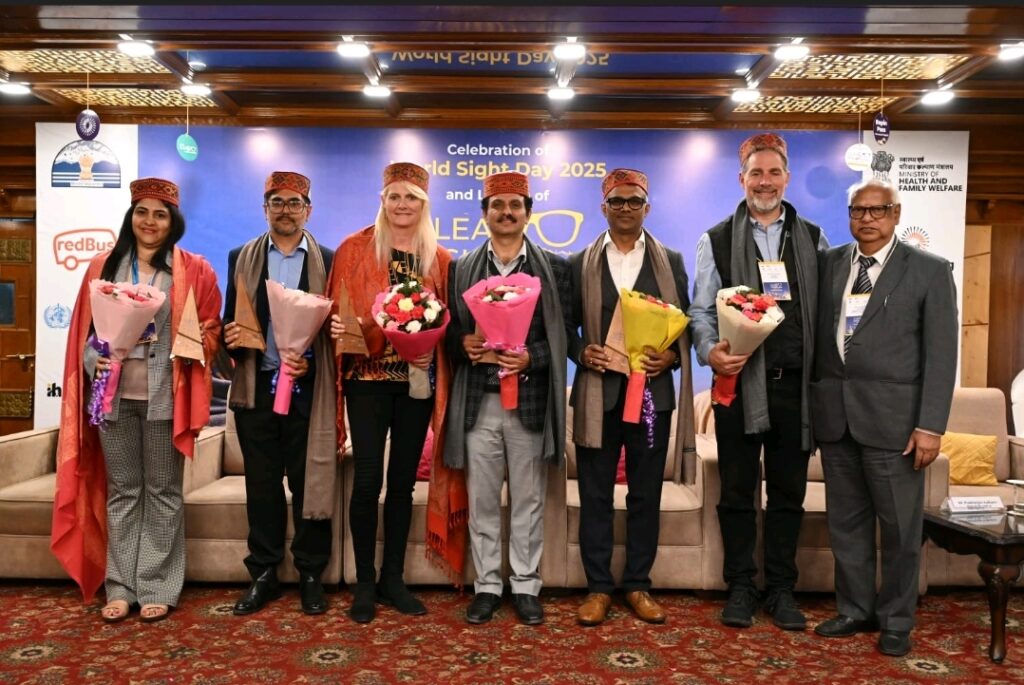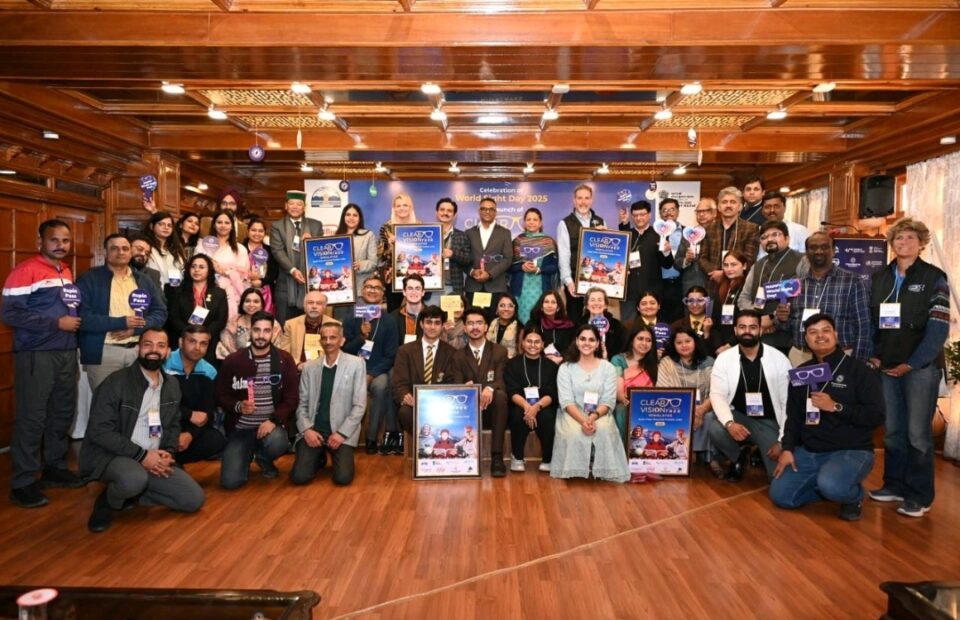When Government, Business, and Nonprofits Unite: How the VisionSpring Partnership Redefines Customer Experience
Picture this: You’re a bus driver navigating Himachal Pradesh’s treacherous mountain roads. Your vision is slightly blurred, but you’ve learned to cope. You squint through windshields, strain to read road signs, and hope for the best. Now imagine getting your first pair of glasses at age 45 and suddenly seeing the world with crystal clarity. This isn’t just a feel-good story—it’s a customer experience revolution happening in India’s remote Himalayas.
The partnership between Himachal Pradesh government, redBus, and VisionSpring Foundation demonstrates something profound about modern customer experience strategy. It shows how three-way collaborations can create customer value that none could achieve alone.
The Customer Experience Gap in Rural India
Rural healthcare faces a customer experience crisis that mirrors challenges across many industries. Distance creates friction. Limited resources reduce options. Poor awareness hampers engagement. The numbers tell a stark story: 55 crore Indians lack access to eyeglasses, with 30 lakh people in Himachal Pradesh having limited eye care access[1].
This isn’t just a healthcare problem—it’s a customer experience problem. Traditional service delivery models fail when customers must travel 100 kilometers for basic services[2]. When government services remain centralized in urban areas, rural customers get left behind.
The partnership’s approach flips this script. Instead of waiting for customers to come to services, it takes services to customers. Mobile eye-screening units trek through remote Himalayan villages, bringing care directly to people’s doorsteps.
Why Corporate-Government Partnerships Transform Customer Experience
Enhanced Resource Mobilization
When redBus joins forces with government agencies, they pool resources that amplify impact. Government provides regulatory support and local knowledge. Corporations bring technology, logistics expertise, and funding. The result: 5,000 people screened across Shimla and Kinnaur districts, including the world’s most dangerous roads[3].
Technology Meets Local Access
redBus brings digital transformation expertise to traditional healthcare delivery. Their logistics capabilities—perfected through managing complex transportation networks—now optimize eye care delivery routes. This creates seamless customer journeys from screening to treatment.
Trust Building Through Familiar Brands
Customers trust brands they know. When redBus—a platform millions use for travel—partners with government health initiatives, it lends credibility and familiarity to potentially intimidating healthcare interactions. This reduces customer anxiety and increases program participation.
The Economic Impact of Better Customer Experience
Research reveals stunning productivity gains when customer experience improves through vision correction. A landmark study found that providing eyeglasses to workers increased productivity by 21.7%, with even greater improvements of 31.6% for workers over 50[4]. These aren’t marginal gains—they represent the largest productivity increases ever recorded from any health intervention.
For India’s agricultural sector alone, replicating these improvements would generate $19 billion in additional economic growth[4]. When customers can see clearly, they work more effectively, earn more income, and contribute more to economic growth.
The VisionSpring model targets three key customer segments through specialized programs:
- See to Earn: Working-age adults who need clear vision for productivity
- See to Learn: Students whose academic performance suffers from poor vision
- See to be Safe: Commercial drivers and transportation workers requiring optimal vision for road safety
Breaking Down Service Delivery Silos
Traditional service delivery operates in silos. Healthcare agencies focus on health outcomes. Transportation companies focus on mobility. Government agencies focus on policy compliance. The VisionSpring partnership breaks these silos by creating integrated customer experiences.
Holistic Customer Understanding
Instead of treating customers as isolated cases, the partnership views them comprehensively. A bus driver isn’t just a transportation professional—they’re someone whose vision affects passenger safety, earning potential, and family wellbeing[1].
End-to-End Journey Mapping
The partnership maps complete customer journeys, from initial screening through eyeglass dispensing to follow-up care. This prevents customers from falling through cracks between different service providers.
Coordinated Touchpoints
Every customer interaction point is coordinated. Whether someone encounters the program through government health workers, redBus marketing, or VisionSpring outreach, they receive consistent messaging and seamless service transitions.
Corporate Social Responsibility as Customer Experience Strategy
Modern CSR programs increasingly function as customer experience strategies. Research shows that CSR initiatives significantly improve customer satisfaction, loyalty, and brand perception[5]. The VisionSpring partnership exemplifies this trend.
Beyond Charity to Value Creation
This isn’t traditional charity—it’s value creation for all stakeholders. Customers receive life-changing vision care. Government improves public health outcomes. redBus strengthens community relationships and brand reputation. VisionSpring scales its mission impact.
Measuring Customer Experience Success
The partnership measures success through customer-centric metrics:
- 73% of program participants receive their first-ever eyeglasses
- 95 lakh eyeglasses distributed in India, creating Rs. 27,000 crore in economic impact
- 27 lakh people screened annually with 12 lakh receiving vision correction
Overcoming Rural Service Delivery Challenges
Rural service delivery faces unique customer experience challenges that this partnership addresses systematically.
Transportation Barriers
Rural customers often lack reliable transportation to access services. The partnership solves this by bringing services to customers through mobile screening units and strategic positioning at accessible locations.
Awareness Gaps
Many rural customers don’t realize they need vision correction or that affordable solutions exist. The partnership creates awareness through community outreach, leveraging local government networks and redBus customer communication channels.
Trust and Cultural Sensitivity
Rural customers may distrust unfamiliar service providers. By partnering with trusted local government and involving community leaders, the program builds credibility and ensures cultural sensitivity.
Economic Constraints
Cost concerns prevent many rural customers from seeking vision care. The partnership provides free screening and affordable eyeglasses, removing economic barriers to access.
Technology Integration for Seamless Experiences
The partnership leverages technology to create smooth customer experiences despite challenging rural conditions.
Digital Screening Tools
Mobile screening units use portable digital equipment for rapid eye testing. This technology delivers consistent, accurate results while maintaining mobility across difficult terrain.
Customer Data Management
Integrated customer data systems track individuals from initial screening through treatment and follow-up care. This prevents duplicate testing and ensures continuity of care.
Communication Platforms
Multiple communication channels—including WhatsApp, voice calls, and community announcements—ensure customers stay informed about screening schedules and results.
Building Sustainable Customer Relationships
The partnership focuses on building long-term customer relationships rather than one-time transactions.
Follow-Up and Support
Customers receive ongoing support after receiving eyeglasses, including maintenance guidance and replacement services. This builds trust and ensures sustained impact.
Community Integration
By working through local communities and government structures, the program becomes part of the local ecosystem rather than an external intervention.
Continuous Improvement
Customer feedback drives program improvements. Regular assessment of customer satisfaction and outcomes informs service refinements.
Lessons for Other Industries
The VisionSpring partnership offers valuable lessons for customer experience professionals across industries.
Multi-Stakeholder Collaboration Works
When organizations with complementary strengths collaborate, they create customer value impossible to achieve individually. Technology companies, government agencies, and nonprofits each contribute unique capabilities.
Customer-Centric Metrics Drive Success
Focusing on customer outcomes rather than organizational outputs leads to better results. Measuring productivity improvements, income increases, and quality-of-life enhancements provides clearer success indicators than traditional healthcare metrics.
Local Partnerships Enable Scale
Partnering with trusted local entities accelerates customer adoption and reduces service delivery costs. Government networks provide credibility and access that external organizations struggle to achieve independently.
Technology Must Serve Customers, Not Organizations
The most effective technology solutions prioritize customer needs over organizational convenience. Mobile screening units and portable equipment serve customers better than centralized facilities requiring customer travel.

The Future of Collaborative Customer Experience
The VisionSpring partnership represents an emerging model for customer experience delivery. As challenges become more complex and customer expectations rise, organizations increasingly need collaborative approaches.
Cross-Sector Innovation
Future customer experience innovations will likely emerge from cross-sector partnerships combining government reach, corporate efficiency, and nonprofit mission focus.
Impact Measurement Evolution
Customer experience measurement will expand beyond satisfaction surveys to include broader life impact metrics like productivity, income, and wellbeing improvements.
Community-Centered Design
Service design will increasingly center on community needs rather than organizational structures, requiring new forms of collaboration and resource sharing.
The Himachal Pradesh vision care initiative demonstrates that exceptional customer experience emerges when organizations unite around shared customer value. By combining government reach, corporate efficiency, and nonprofit mission, partnerships can address customer challenges no single organization could tackle alone.
For customer experience professionals, this partnership offers a blueprint for creating transformative value through collaboration. It shows that the future of customer experience lies not in organizational silos but in partnerships that put customer outcomes first.
When customers can see clearly—literally and figuratively—everyone benefits. That’s the power of customer experience partnerships done right.

